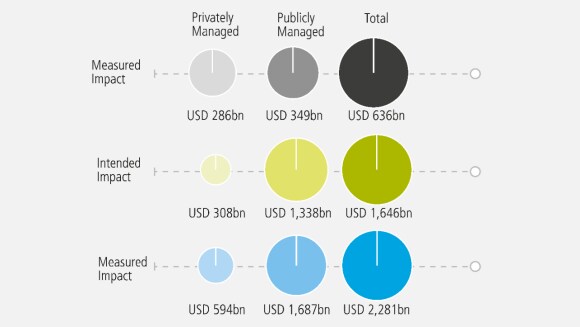SI regulation encourages investment in sustainable activities and the disclosure regime is intended to increase transparency but how can the SFDR regulation drive better outcomes?
The EU’s Sustainable Finance Disclosure Regulation (SFDR) is a set of rules focused on sustainability oriented categorization and disclosure of financial products.
Its principal aims are:
- to disclose to market participants the details of potential sustainable investments, enhancing good decision-making,
- to direct capital toward sustainable investments that help mitigate and solve important climate and social problems.
The disclosure dimension of the SFDR (amongst others) is not new, financial product disclosure has been an important focus of financial regulators for a long time. What is new is the concept that the regulator implies that social problems can be addressed with financial products1, a view that grew directly out of recent developments in impact investing.
Publicly managed impact strategies are growing
Publicly managed impact strategies are growing

The evolution of impact investing
The evolution of impact investing
Impact investments date back very far in the field of philanthropy and private equity. But impact investing in public securities is relatively new. UBS has been a pioneer in this space, managing one of the world’s largest public equity impact mandates for a Dutch pension fund as well as building science-based metrics for measuring the external impact of public companies.2
Not all investments in the SFDR scheme have a direct impact component, but by mandating disclosure of metrics such as carbon intensity3, investors may be likely to push their capital in a greener direction and engage with companies to lower carbon footprints. It is said that one “manages what one measures,” and this would be no exception.

Related
Sustainable and impact investing
Sustainable and impact investing
The insights you need as we move into a sustainable investing world
Europe pushes for solutions
Europe pushes for solutions
The EU is answering a call for solving large-scale issues such as climate change and other social issues by pushing investors of all stripes to direct their investments toward possible solutions. In addition, by requiring that investors are made aware of the negative externalities of their investments, the EU is surmising that investments that have significant externalities will be shunned.
To sum it up, the EU is extending the scope of the social purpose of investing. Up until the last 10 or 15 years, the purpose of professional investing was to generate a positive risk-adjusted return that enabled pensioners to retire, pay their medical bills, educate their children and meet other goals. How the portfolio generated that return or the externalities of the investments in the portfolio was not an issue, in line with the Milton Friedman concept that the purpose of a public company was to make money and nothing else. But all this has changed in the minds of many.
ESG investors focus on positive change
ESG investors focus on positive change
Investing in companies with significant negative effects on the environment, the work force or the supply chain has become anathema to many investors. And investing in companies that have significant positive externalities has become the focus of environmental, social and governance (ESG) investing. This trend has been bolstered by many studies that show ESG factors are material and can be integrated in investment decision-making to improve risk/return outcomes4.
Another way to look at the SFDR is to put it in a broader context of evolution in the sustainable investment space. This evolution is rapidly taking place across the globe in parallel to the SFDR.
Sustainability data is improving
Sustainability data is improving
First, the field of sustainability data itself is evolving very quickly. The Sustainability Accounting Standards Board, a leader in developing the accounting rules for material sustainability factors has merged with the International Integrated Reporting Council, forming a unitary global approach to reporting. And at the same time, the resulting entity, the Value Reporting Foundation is working closely with the International Financial Reporting Standards Foundation (IFRS) to “accelerate convergence in global reporting standards focused on enterprise value,” according to a March 2021 statement by the IFRS announcing the working group.
We saw the same process play out with financial reporting culminating in global accounting rule convergence with the 2002 Norwalk agreement that aligned US and non-US accounting rules.
We can expect that a similar convergence of material sustainability factors will emerge soon, especially since it is strongly backed by regulators around the world.5
Disclosure is becoming the norm
Disclosure is becoming the norm
Second, the Task Force for Climate-Related Financial Disclosure has been extremely active in publishing disclosure and methodology recommendations for issuers, managers and asset owners. These have been recently updated and expanded6 with a Status Report, Guidance on Metrics, Targets and Transitions Plans, an Annex on Implementation and an upcoming Portfolio Alignment Report. Taken together, this body of work, which is also being endorsed and mandated by regulators, encompasses a broad set of metrics, methodologies and disclosures that greatly inform the analysis of climate risk.
Standards are key to ESG disclosure
Standards are key to ESG disclosure
Finally, the disclosure dimension of SFDR is enhanced by the final release of the CFA Institute Investment Product ESG Disclosure standards. These standards provide a clear and concise approach to disclosure of the key product features of all products that have an ESG component, across all asset classes. These standards are voluntary and market-led. They have been developed over two-and-a-half years with two rounds of public consultation. We believe that they are likely to be endorsed by regulators such as the SEC during 2022, which prefers to point to market-led standards rather than to provide top-down regulation.
This is the approach that the SEC has taken with financial accounting rules for public companies; they empowered the Financial Accounting Standards Board to be the rule-making body for public companies. The CFA Institute Investment Product ESG Disclosure Standards are part of and similar to the Global Investment Performance Standards which are voluntary but universally adopted around the world.7
The SFDR is an important and influential element of the search for solutions to the climate crisis. It should be viewed as part of a broad set of developments that taken together are changing the sustainable investment landscape from top to bottom.

PDF
Investment outlook 2022
Investment outlook 2022
As we work towards building a more sustainable future and continue to face global supply chain and inflation challenges, what role will asset managers play, and how will this reshape the economy?
Was this article helpful?
Please enable javascript in your browser and retry.
The feedback component cannot be displayed.
About the author

Bruno Bertocci
Head of the Global Sustainable Equities
Bruno Bertocci announced he will be retiring in March 2022 after a 40+ year career, having been Head of Sustainable Equities and lead Portfolio Manager of the Global Sustainable Equity portfolio since 2007.
Read more
Make an inquiry
Fill in an inquiry form and leave your details – we’ll be back in touch.
Introducing our leadership team
Meet the members of the team responsible for UBS Asset Management’s strategic direction.
